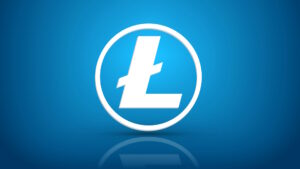According to fresh data from Statista, only 7% of Americans have exchanged bitcoin in their lifetime, showing that current trends are taking place in a relatively early stage of incoming parabolic growth.
In the longer term, bitcoin has significant growth potential to evolve into an established store of value, like gold, or better. In this eventuality, investors anticipate its valuation to increase exponentially over the coming years.
In Brief
-
Per Statisa, only 7% of Americans bought bitcoin..
-
Only six countries have over 10% of their population as bitcoin users.*
-
Bitcoin on-ramps continue to improve, but an ETF would make things simpler.
-
Predictions for bitcoin vary between $20,000 & $1 million.
What could be needed for Bitcoin to pick up the pace?
Today, most demand comes from investors who perceive bitcoin as gold 2.0. Indeed, investors believe that bitcoin will eventually establish itself as a safe-haven asset once the number one cryptocurrency becomes widely accepted.
Consequently, institutional investors have been piling into bitcoin in recent months. For instance, MicroStrategy and Stone Ridge, purchased $425 million and $110 million worth of Bitcoin, respectively.
However, once retail demand picks up, this could change rapidly.
The data from Statistica shows how only six countries have more than 10% of their population as bitcoin users. The topmost countries in in these terms are Nigeria, Vietnam and South Africa, according to the Global Consumer Survey. Interestingly enough, Malta – the so-called ‘blockchain island’, doesn’t even show up on the list.
*However, the survey does not include countries top to bottom, which might have missed some crypto markets. South Korea, for example, is not on the list despite being one of the world’s biggest bitcoin markets.
Dan Tapiero, the co-founder of 10T Holdings, pointed this out, saying:
“It’s a survey of select countries. It’s not a straight top to bottom survey. IE there are countries that belong on this list that are not listed.”
In recent years, the Bitcoin exchange and fiat on-ramp infrastructure have significantly improved across the US, Europe, and Asia. However, many countries lack reliable infrastructure to this day.Canada, for example, lacks a strictly regulated major local crypto exchange other than Coinbase.
Thankfully, the global nature of cryptocurrencies and businesses in the sector means that alternatives such as Bitfinex exist and operate across borders, save a few exceptions.
Without exchange-traded funds (ETFs) and major bank custodians, users will need to go through complex processes in order to use an exchange, including KYC verification processes in order to buy their first bitcoin satoshis. Still, these processes have been made relatively easy with mobile applications such as the crypto(.)com mobile app listed above.
Naturally, on-boarding improvements for better infrastructure are ongoing, and will only be made easier for prospective participants in this budding financial market.
 Edit Image
Edit Image
What would happen to BTC with mainstream adoption?
Long-term predictions for bitcoin vary widely, ranging from $20,000 to $1 million to even $10 million or more.
Followers of this blog and newsletter will be aware of a rather modest target of $20,000 in the first quarter of 2021, and possibly $100,000 by the end of 2021.
Raoul Pal, the founder of the Real Vision Group, believes BTC is heading to $1 million.
Should bitcoin hit $1 million, the total market capitalisation of bitcoin would be at around $21 trillion – that would be over twice that of gold’s current market valuation of $9 trillion.
Join the telegram channel for updates, charts, ideas and deals.


